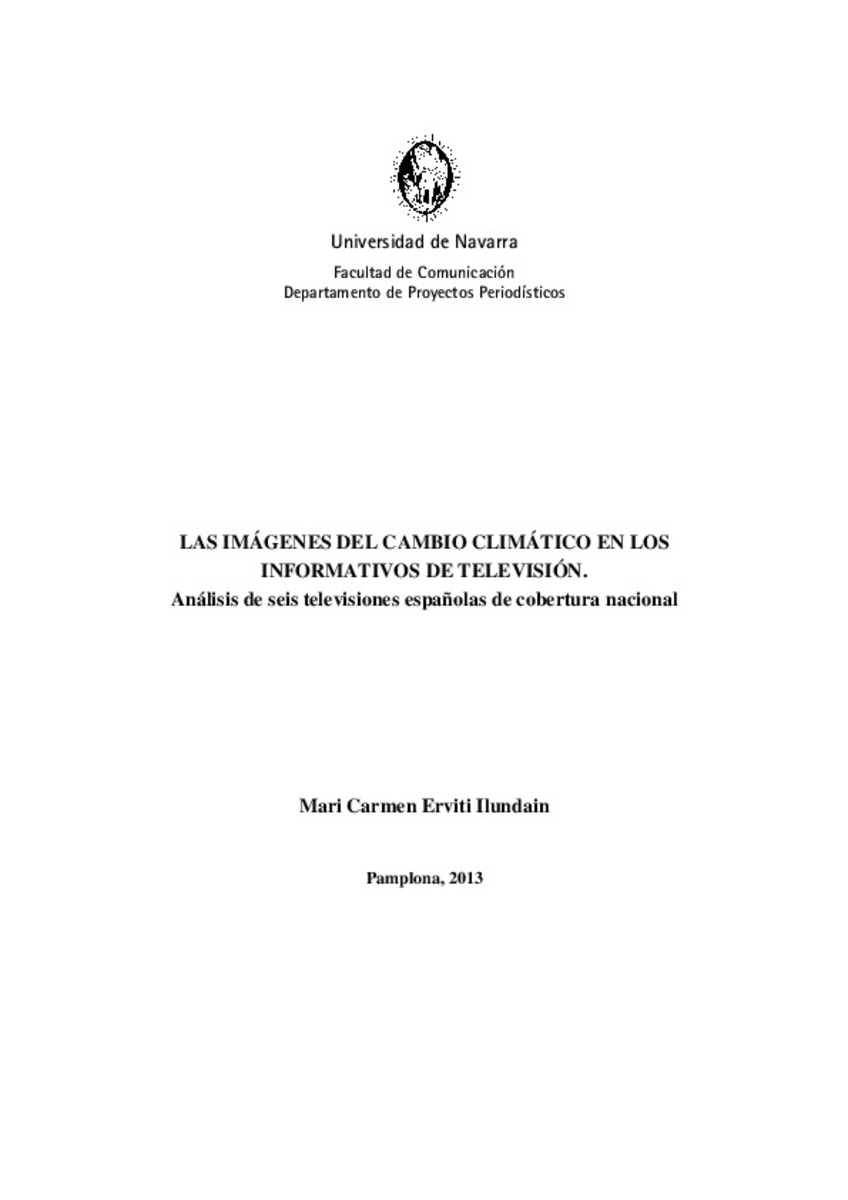Las imágenes del cambio climático en los informativos de Televisión. Análisis de seis televisiones españolas de cobertura nacional
Keywords:
Images
Television
News programmes
Climate change
Cambio climático
Defense Date:
30-May-2013
Citation:
ERVITI ILUNDAIN, Mª Carmen. “Las imágenes del cambio climático en los informativos de Televisión. Análisis de seis televisiones españolas de cobertura nacional”. León Anguiano, Bienvenido (dir.). Tesis doctoral. Universidad de Navarra, Pamplona, 2013
Statistics and impact
0 citas en

0 citas en

Items in Dadun are protected by copyright, with all rights reserved, unless otherwise indicated.








